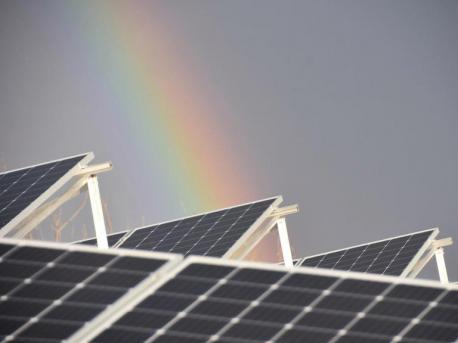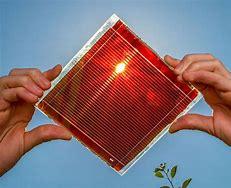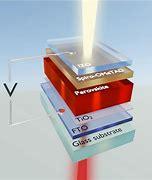Results: Perovskite
Published on 04/29/2022
Scientists have discovered a way to make ultra-efficient solar cells on a commercial scale using the “miracle material” perovskite. A perovskite solar cell (PSC) is a type of solar cell which includes a perovskite-structured compound, most commonly a hybrid organic-inorganic lead or tin halide-based material, as the light-harvesting active layer. Perovskite materials, such as methylammonium lead halides and all-inorganic cesium lead halide, are cheap to produce and simple to manufacture. This survey uses the article, "Scientists make ‘miracle material’ breakthrough to revolutionize solar power" by
Anthony Cuthbertson, The Independent, as its source.

QUESTIONS
GO to COMMENTS
Comments
1.
1.
A team from the City University of Hong Kong (CityU) and Imperial College London made the discovery in a breakthrough that could have major implications for renewable energy production and reaching zero carbon objectives. Perovskite has been hailed for its remarkable properties compared to traditional silicon solar cells, however until now they have been too unstable to be suitable for commercial use. The next-generation cells are expected to cost less, have a much higher power conversion efficiency, and be lightweight and flexible – opening up new applications like coating glass windows with thin layers of solar panels. Does this sound like a promising breakthrough for solar energy applications?

Yes
52%
1151 votes
No
11%
245 votes
Undecided
37%
804 votes
2.
2.
Zeev Valy Vardeny, a Distinguished Professor of Physics at the University of Utah, described perovskite's unique properties in 2017 as "unbelievable, a miracle material". At the time, commercialization of the technology was thought to be at least a decade away, however this discovery could push that forward considerably. The chemists were able to overcome perovskite's difficult properties by making use of a metal-containing material called ferrocenes, which they added as an interface between the light-absorbing layer of the solar cell and the layer that transports electrons. Using this breakthrough technique, the scientists became the first team to create a solar cell capable of performing at a similar level to silicon cells while still remaining stable. Were you aware of this new development in solar technology?

Yes
11%
235 votes
No
68%
1498 votes
Undecided
21%
467 votes
3.
3.
Tests of the new solar cells found that they could run under continuous illumination for more than 1,500 hours while retaining 98 per cent of their initial efficiency. "The most important part of this work is that we successfully fabricated highly efficient perovskite solar cells while providing promising stability," said Dr Zhu Zonglong, an assistant professor in City U's Department of Chemistry. "The reliable results mean that the commercialization of perovskites is on its way. We aim to scale up the production of perovskite solar cells using this novel molecule and facile method, contributing to the global 'zero-carbon' sustainability goal." The researchers have patented the design, which was described in a paper published in the journal Science last week. If these solar cells were readily available and at a cost-effective price, would you consider converting your home (non-home owners, please answer as if you could make this decision where you live) to solar energy?

Yes
39%
859 votes
No
18%
399 votes
Undecided
43%
942 votes
COMMENTS


